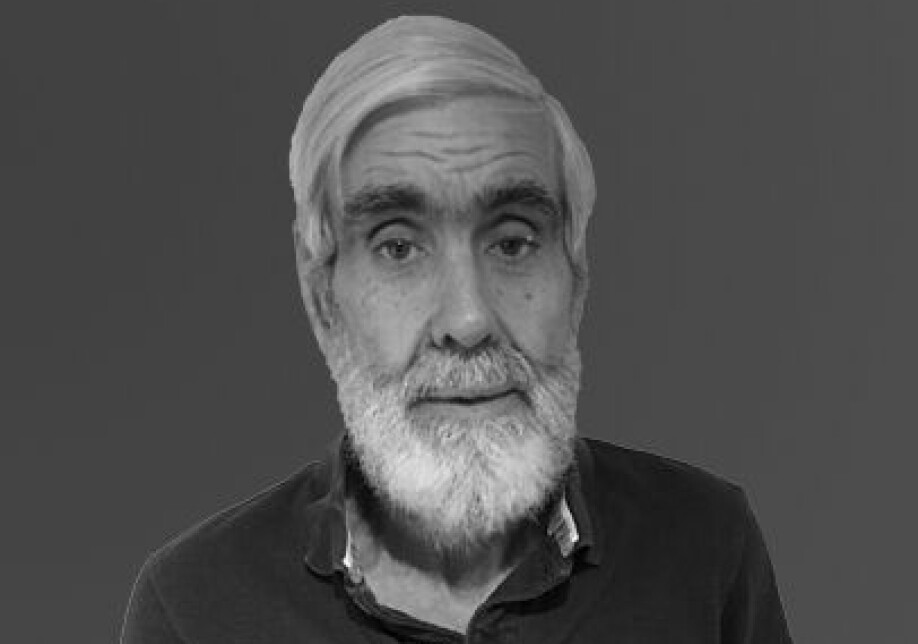
These glasses help you see and hear better
Many people are ashamed to wear a hearing aid but aren’t as opposed to wearing glasses. Together with a team of researchers, an entrepreneur has created a completely new product for those who struggle with both vision and hearing.
As we approach 60, it can be almost impossible to find a café or restaurant where we can meet people and hear what they have to say.
Tom Austad experienced exactly this when he went to a bar with some colleagues in London in 2017.
“We sat around a table in a noisy room. Two of those I went out with took off their hearing aids,” he says.
The colleagues explained that they could not hear any of the conversations around the table. They could, however, hear the clinking of glasses and the voices behind them very well. The hearing aid picked up all the noise, and it became impossible to distinguish the sounds from each other.
However, none of them could explain why it worked that way.
Ignited an idea
Austad began asking people around him why sounds are perceived in such a way by people who use hearing aids, but he received no sufficient answers.
Next, he chose to contact an audiologist, who explained to him how our hearing works. The problem became clearer.
Based on these conversations, Austad asked himself the question: Why are the microphones placed behind the ear in a hearing aid, when what you want to hear is almost always in front of you? Can something be done about this?

Ashamed of wearing hearing aids
In his conversations with people about hearing aids, Austad discovered something else as well: Many find it embarrassing to use hearing aids.
Austad gained access to a survey from the market analysis agency Opinion. They had asked a representative sample of the Norwegian population what they thought about wearing glasses versus what they thought about wearing hearing aids.
“People experience wearing glasses almost like wearing a piece of jewellery. They often have several pairs that they can choose from,” he says.
Using a hearing aid, on the other hand, was perceived completely differently.
“We perceive those who use hearing aids as old. And we speak to them differently because we can see that they have poor hearing,” Austad says.
Test glasses built from plywood
Based on the knowledge he had gathered, the entrepreneur set about building a pair of plywood glasses.
The first prototype was one metre long. On it he placed 16 microphones.
The first year he sat at the mixing desk and tried out different combinations of the microphones with different setups.
Four years later, using technology from the hi-fi industry, he has developed a normal-sized prototype. The prototype has been developed in collaboration with investors and several hired specialists.
Camera finds the sound
With the help of a self-developed algorithm, they have together managed to distinguish voices from noise.
This means that the person wearing the glasses primarily hears the voice of the conversation partner, while other noise in the background is muffled.
The glasses also have an HD camera that captures faces. When you watch someone speaking, the algorithm will use the camera to figure out where the sound is coming from. This is how the algorithm determines what should be amplified and what should be quietened.
The glasses also have functionality that makes it possible to adjust where the sound should be picked up from. It is useful, for example, when you are driving a car and you want to hear what the passenger in the car is saying.
If you don't need sound, for example when you sit down to read a book, it goes to sleep. When someone speaks to you, the sound is activated again. The app that comes with the glasses can also be used to make adjustments.

Nerve cells gone for good
What usually happens with impaired hearing is that the nerve cells in the cochlea in our ear become "worn down", Ole Tvete explains. He is a pioneer in the field of hearing and has worked at the Otorhinolaryngology Department at the Oslo University Hospital for many years, although he is now retired.
The nerve cells for higher-pitched sounds are the most worn down.
Usually this happens because of age. However, impaired hearing can also be a side effect of certain medications, or exposure to very loud noise.
It is therefore the higher-pitched sounds that need amplification. The nerve cells for the lower-pitched sounds are largely preserved.
Unfortunately, when the nerve cells break down, they can’t be saved.
“You cannot regain normal hearing with any aid, but you can improve it,” Tvete says.
Better than a hearing aid
A normal hearing aid amplifies higher-pitched sounds, whilst the lower-pitched sounds directly enter the ear via a ventilated earplug or a completely open solution.
This provides a good solution in quiet surroundings. In situations where there is noise, however, it becomes more difficult to understand speech.
“Our hearing glasses with 16 microphones and a camera are a good attempt to improve the signal/noise ratio for these people. The sound is better than with normal hearing aids in noisy situations,” says Tvete.
The company's plan is to soon be able to sell their first designer pair of hearing aid glasses on the market.
———
Translated by Alette Bjordal Gjellesvik.
Read the Norwegian version of this article on forskning.no
------

































